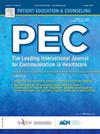“About the patient, not for the patient”: A qualitative study on medical reports in hepatology
IF 3.1
2区 医学
Q2 PUBLIC, ENVIRONMENTAL & OCCUPATIONAL HEALTH
引用次数: 0
Abstract
Background
In hepatology, clinical documentation such as post-visit summaries and discharge letters plays a crucial role in communicating medical information across complex and fragmented care pathways. While often treated as administrative tools, these documents also carry cognitive, emotional, and relational weight for patients and caregivers—especially in the context of chronic liver disease.
Method
Using a focused ethnographic approach, we conducted 14 semi-structured interviews with patients and caregivers from 11 countries, combining narrative inquiry with think-aloud protocols as participants reviewed medical reports.
Results
Thematic analysis revealed six interpretive themes describing how participants related to medical reports: reports as anchors of control; prioritizing and tracking key content; design as a gateway to usability; the emotional weight of language and tone; reports as extensions of the clinical relationship; and co-design as a pathway forward. Participants described reading reports as a routine yet emotionally charged activity, often marked by confusion, anxiety, or frustration. Some reported discovering serious diagnoses through documents alone, without preparatory discussion, which they experienced as distressing and trust-eroding.
Conclusion
These exploratory findings suggest that clinical documentation may influence how patients and caregivers experience care. Reports perceived as complex or unclear could hinder comprehension and reassurance, while clearer and more accessible formats may help support trust and engagement.
Practice implications
Written materials in hepatology should be linguistically accessible, structurally clear, emotionally attuned, and co-designed with patients and caregivers to enhance self-management and continuity of care.
“为病人,不为病人”:肝病医学报告的定性研究
在肝病学中,临床文件,如就诊后总结和出院信,在复杂和分散的护理途径中沟通医疗信息起着至关重要的作用。虽然这些文件通常被视为管理工具,但对患者和护理人员也具有认知、情感和关系方面的重要性,特别是在慢性肝病的背景下。方法采用集中的人种志方法,我们对来自11个国家的患者和护理人员进行了14次半结构化访谈,在参与者回顾医疗报告时,将叙述询问与有声思考方案相结合。结果主题分析揭示了描述参与者如何与医疗报告相关的六个解释性主题:报告作为控制锚点;对关键内容进行优先排序和跟踪;设计是通往可用性的门户;语言和语气的情感分量;报告作为临床关系的延伸;共同设计是前进的道路。参与者将阅读报告描述为一种常规但充满情感的活动,通常带有困惑、焦虑或沮丧的特征。一些人报告说,在没有事先讨论的情况下,仅通过文件就发现了严重的诊断,这让他们感到痛苦和信任受到侵蚀。结论临床文献可能影响患者和护理人员的护理体验。被认为复杂或不明确的报告可能会阻碍理解和保证,而更清晰和更容易理解的格式可能有助于支持信任和参与。实践意义肝病学的书面材料应在语言上易于理解,结构清晰,情感协调,并与患者和护理人员共同设计,以增强自我管理和护理的连续性。
本文章由计算机程序翻译,如有差异,请以英文原文为准。
求助全文
约1分钟内获得全文
求助全文
来源期刊

Patient Education and Counseling
医学-公共卫生、环境卫生与职业卫生
CiteScore
5.60
自引率
11.40%
发文量
384
审稿时长
46 days
期刊介绍:
Patient Education and Counseling is an interdisciplinary, international journal for patient education and health promotion researchers, managers and clinicians. The journal seeks to explore and elucidate the educational, counseling and communication models in health care. Its aim is to provide a forum for fundamental as well as applied research, and to promote the study of organizational issues involved with the delivery of patient education, counseling, health promotion services and training models in improving communication between providers and patients.
 求助内容:
求助内容: 应助结果提醒方式:
应助结果提醒方式:


